The landscapes of North America vary widely. Climates in the extreme north are as harsh as those in Florida, and in the south are as warm as those in the Caribbean.
North America is home to several species of raptors, notably owls, vultures, falcons, and hawks.
Different species of North American birds of prey will be covered here.
| Image | Name |
|---|---|
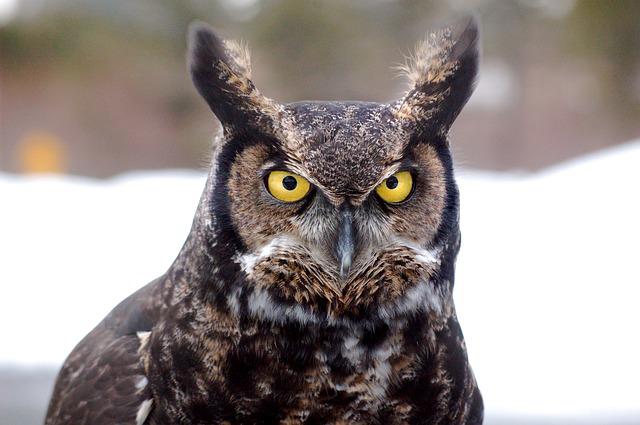 | Great Horned Owl |
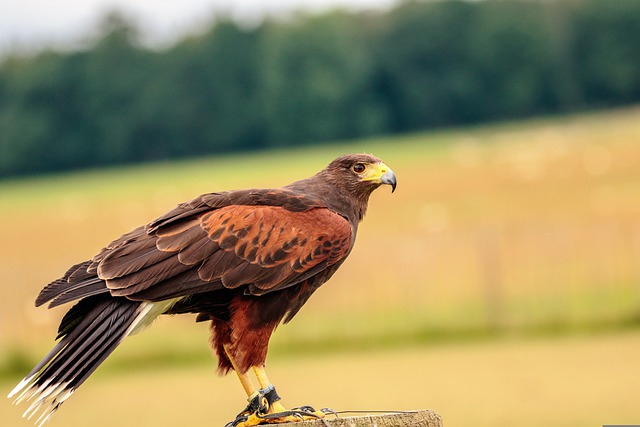 | Harris Hawk |
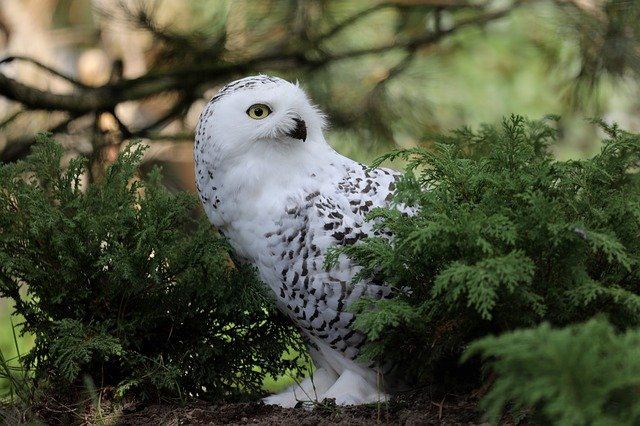 | Snowy Owl |
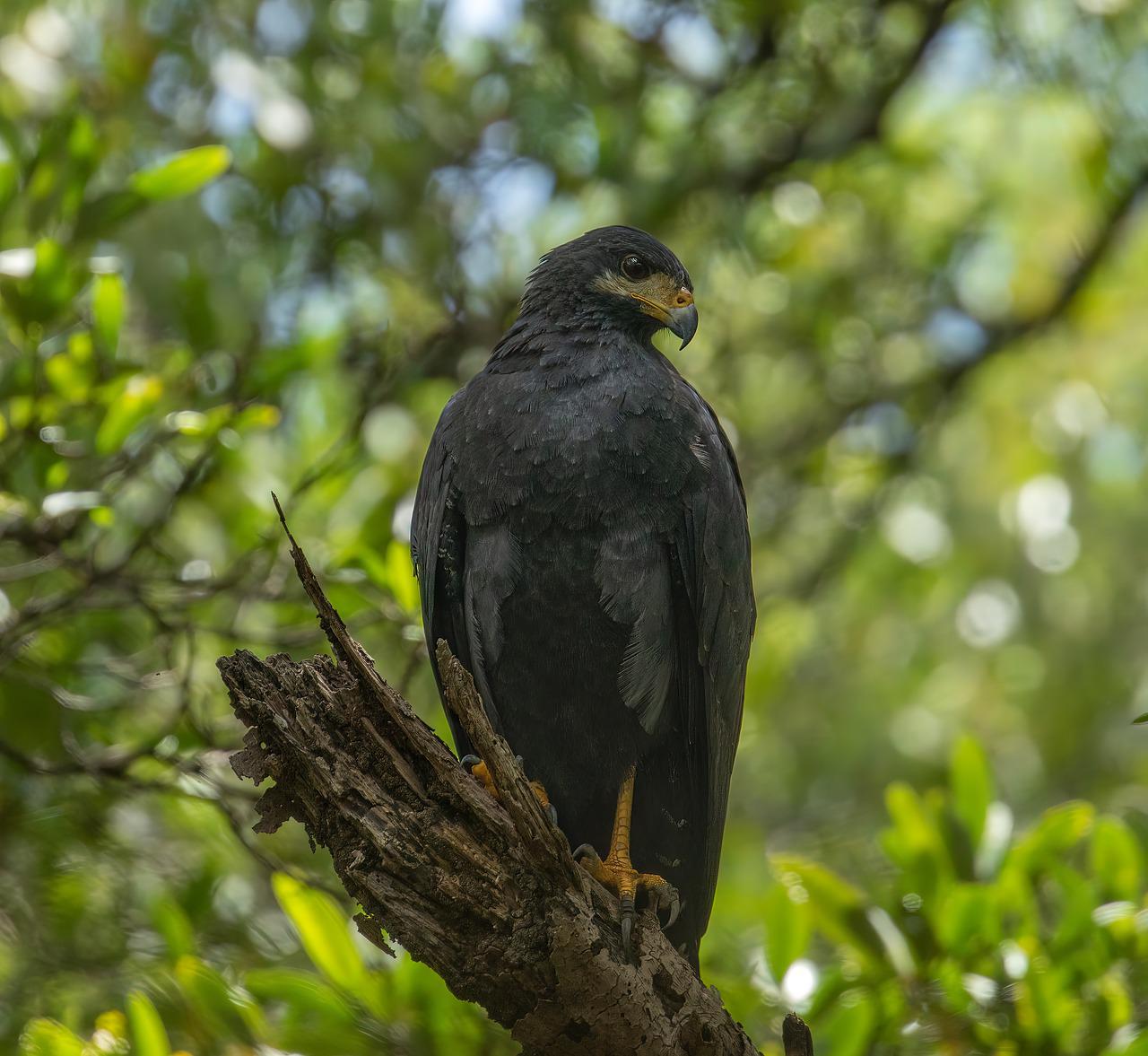 | Common Black Hawk |
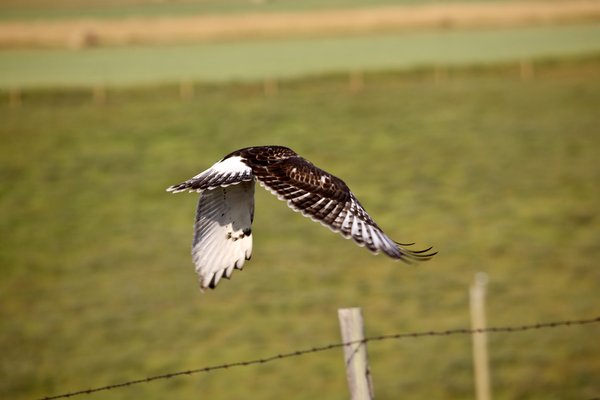 | Ferruginous Hawk |
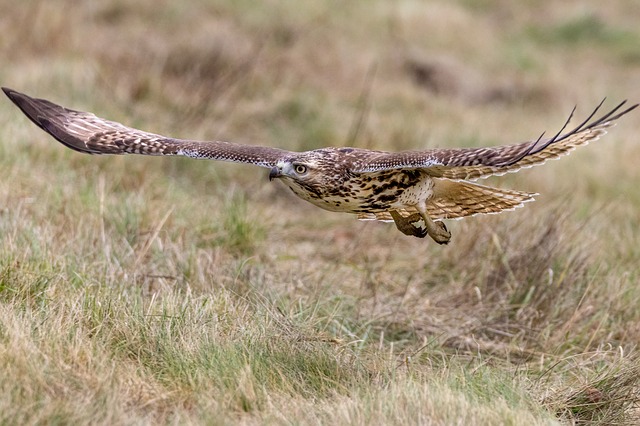 | Red-Tailed Hawk |
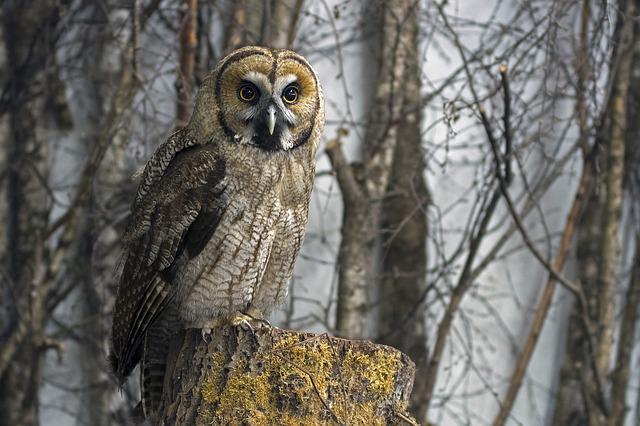 | Great Gray Owl |
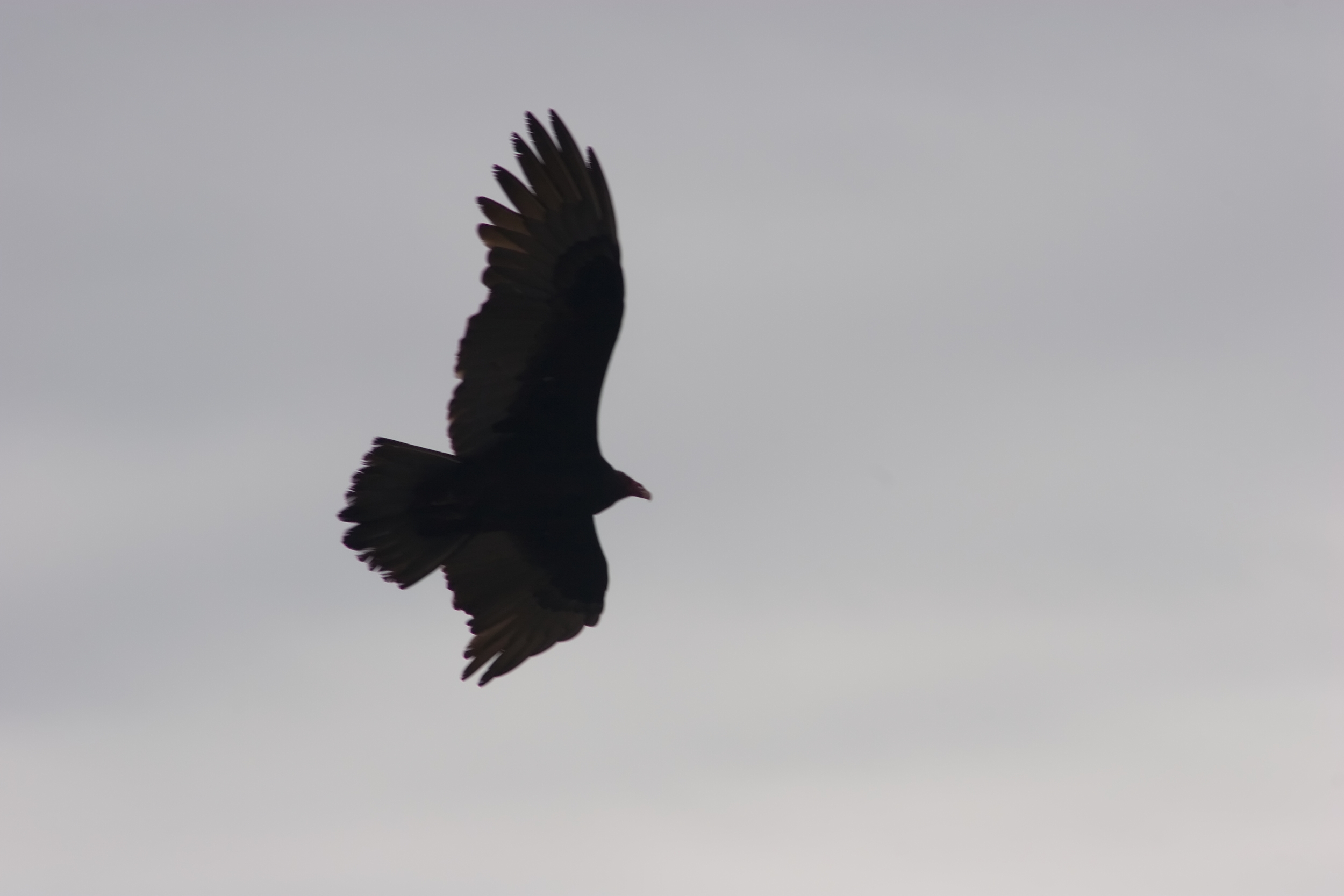 | California Condo |
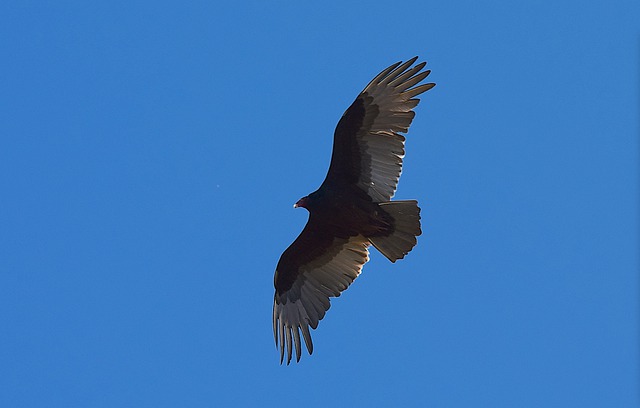 | Turkey Vulture |
 | Bald Eagle |
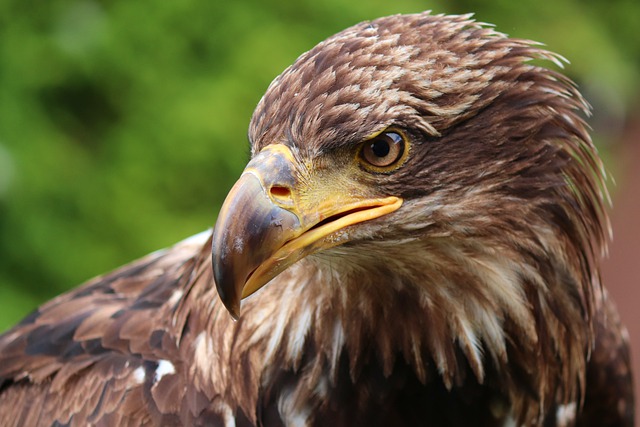 | Golden Eagle |
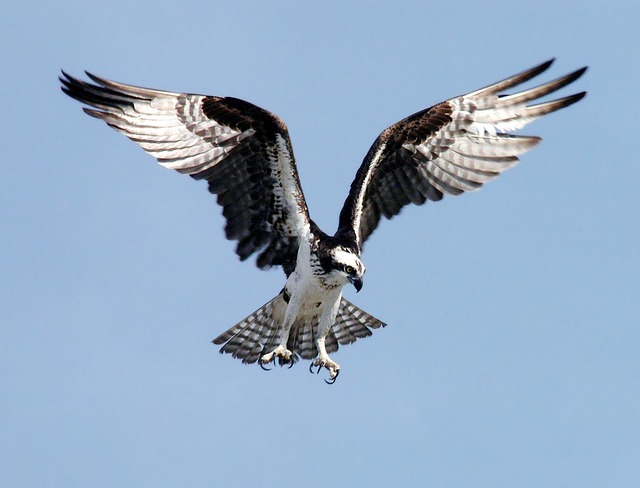 | Osprey |
Birds of Prey in North America
1. Great Horned Owl

Great horned owls have distinctive tufts of plumage on their heads, which have earned them the alternate moniker “cat owls.”
Their body length is just approximately 2.1 feet, but their wing spread may exceed 4.6 feet. You may expect them to weigh about 5 pounds.
The great horned owl is a highly versatile bird that can survive in a variety of habitats over most of North America.
Raccoons, squirrels, rabbits, and even other owls are all fair game for great horned owls.
They have great night vision thanks to their huge eyes, which they use for hunting.
Their flight is muffled and stealthy, thanks to their fringed feathers.
The great horned owl is the archetypal owl of stories and legends. It’s the classic owl “HOOO-HOOO” sound.
2. Harris Hawk

Only isolated areas in Arizona, Texas, and New Mexico are home to Harris’s hawks. You’re more likely to see one in Mexico or Baja.
Their natural environment consists of desert lowlands and mesquite brushlands.
Because of the greater availability of food and water, they have also started to spread over urban and suburban regions.
Harris’s hawks aren’t lone wolves; they work together to get their prey.
The average size of a hunting party is between two and seven of these animals.
A greater possibility of survival is held by groups of three or more hawks than by solitary birds.
Occasionally, Harris’s hawks may carry food to an injured member of their flock.
3. Snowy Owl

The massive wingspan of a snowy owl, at over 5 feet, complements its small yet impressive body size of about 2.5 feet.
Adults typically weigh in at about 6 pounds, although we have seen as little as 3 pounds.
The average daily diet of a snowy owl consists of 3 to 5 lemmings, more than 1,600 lemmings every year! Rabbits, fish, rats, and birds are among the supplementary foods they eat.
Snowy owls typically perch and watch for prey and then take off at great speed to get it.
Their year-round home is in the Canadian Arctic, although they have been seen in the northern United States during the winter.
The prospect of seeing this uncommon bird excites birdwatchers every time.
4. Common Black Hawk
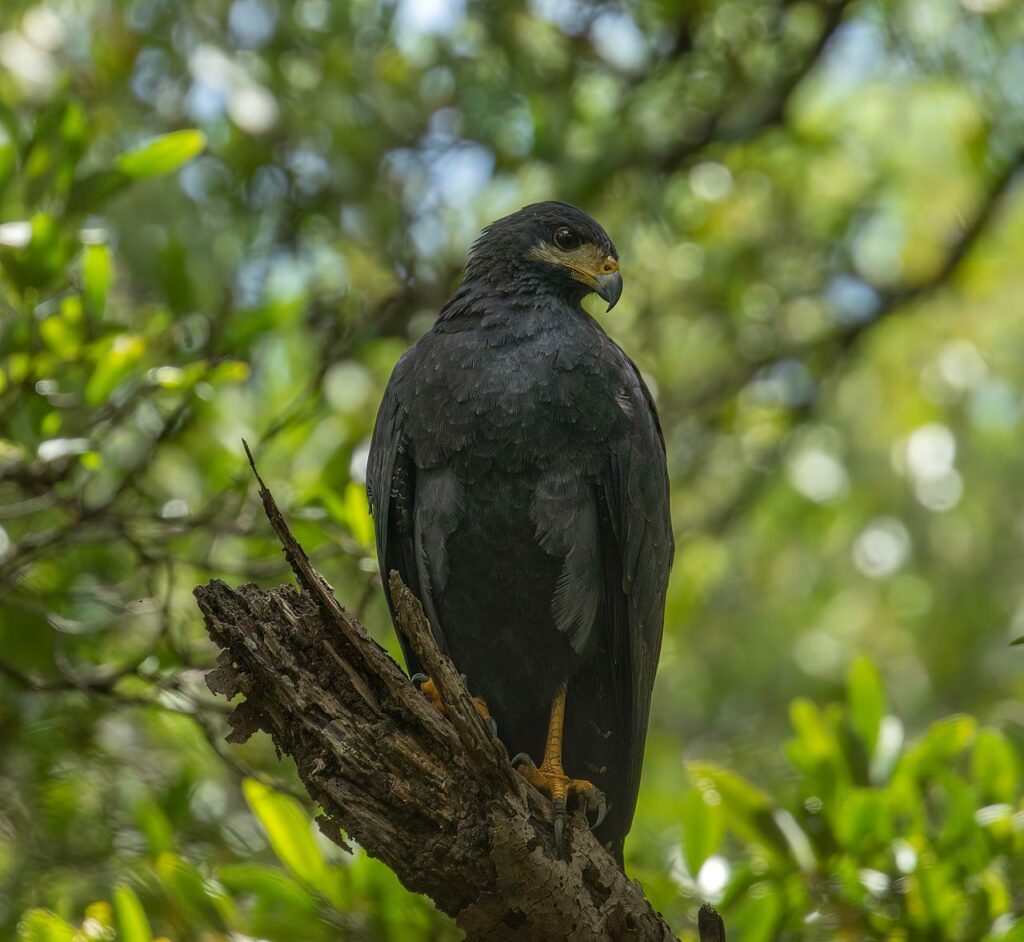
It is only during the mating season that the common black hawk makes its way to the states of New Mexico, Arizona, and Texas.
The wintering grounds of the common black hawk include Mexico, northern South America, and Central America.
They like to live in close proximity to water and often choose nesting trees right on the bank.
In its permanent range, which includes extensive stretches of coastline, the common black hawk often dines on crabs and other small aquatic creatures.
Breeding season in New Mexico is a time for a wide variety of fish, amphibians, and frogs to congregate together in the state’s interior.
5. Ferruginous Hawk

There are many kinds of flying hawks across North America, but none are as huge as this one.
A ferruginous hawk may grow to reach 2 feet in length, with a wing span of 5 feet. They’re light, weighing in at around 5 pounds at most.
Food & Habitat
On the plains of the American West, you may see them swooping down to capture ground rabbits, squirrels, and snakes. At maximum speed, they may dive for 150 miles per hour.
Lowlands, plains, plateaus, valleys, and the outskirts of deserts are all places you could find them.
There is a light variant and a dark variant of the ferruginous hawk.
6. Red-Tailed Hawk

During the mating season across Canada and the United States, the red-tailed hawk is a familiar sight.
It is also prevalent across most of Mexico. Among the most frequent hawks across North America, they are also frequently seen perched on telephone poles.
They call a variety of environments home, from the desert and farms to parks.
The red-tailed hawk can thrive just about everywhere there is open terrain.
The shriek of a red-tailed hawk is easily recognizable. Since it is so easily recognized, it is often used in films as the generic cry of a hawk or other bird of prey.
As one of North America’s biggest raptors, this bird is frequently seen soaring on rising air currents.
7. Great Gray Owl

Among the largest owls, the great grey has a length of about 3 feet and a wingspan of nearly 5 feet.
They stand at a towering height yet weigh in little under 4 pounds.
Great Gray Owls spend their time hunting in deep stands of evergreen trees like fir and pine, with only occasional clearings into which they may emerge.
Voles, shrews, pocket gophers, squirrels, and weasels are just a few of the tiny animals that make up the bulk of their diet.
When there is a lack of voles in the north, great grey owls can migrate south to find a new source of food.
The northernmost parts of the United States and Canada are within their habitat range.
The only way to see one of these elusive birds is to actively search for it since it is a species that avoids human contact.
8. California Condo
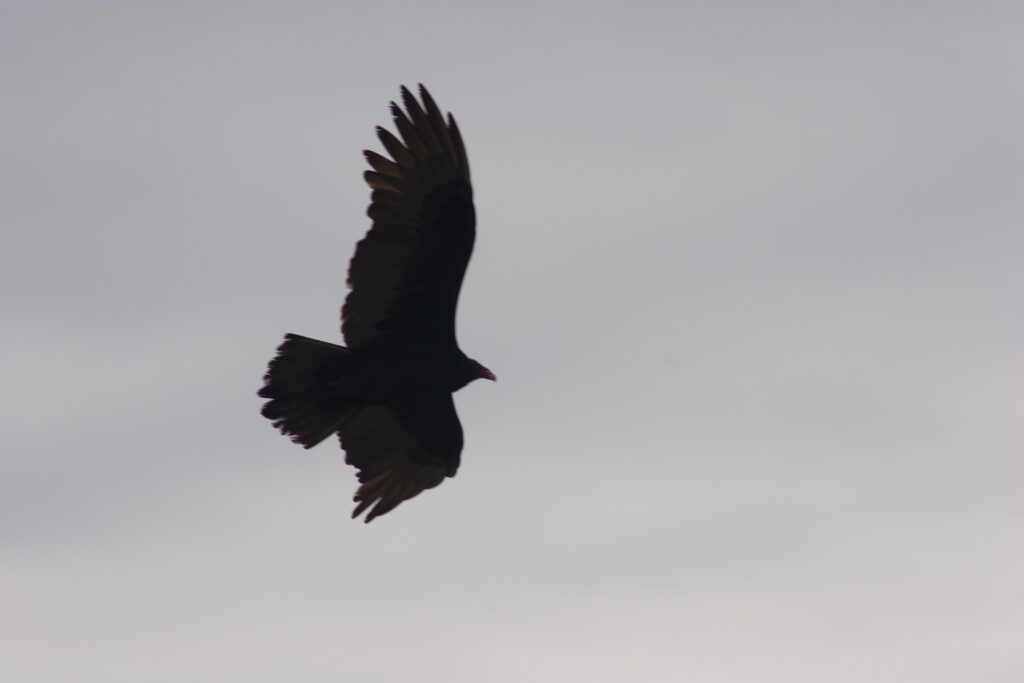
The California condor is the biggest bird native to North America.
Their massive wingspan may reach 10 feet, while their length is 4.5 feet and their weight is 20 pounds.
Habitat
The rugged, wooded areas of Southern California, Utah, and Arizona are home to the California condor.
The California condor is no different from other condors in its preference for carrion as a source of food. In their hunt for food, they have been reported to go as far as 160 kilometers!
This large bird rides the winds to altitudes of 15,000 feet while in flight.
The California condor is another species that has flourished after being protected. After dropping to an all-time low of 22 in the 1980s, the population has recovered, with an estimated 230 birds still surviving in the wild today.
A total of 160 captive birds are actively contributing to efforts to restore wild bird populations.
The goal of these breeding initiatives is to restore the birds to their original habitats so that their numbers may be sustained without further human interference.
There are some magnificent bird species across North America. Amazing birds of prey, such as swans, eagles, owls, and condors, call this area home.
A few of these birds are enormous, with the Californian Condor having the largest wingspan at 10 feet.
Check out some of these huge birds on your list the next time you go birding in North America.
9. Turkey Vulture

Turkey vultures are frequently seen riding the winds far above the earth.
Buzzards are a common name for them due to their extensive distribution. With a wing span of about 6 feet, they are able to swiftly go through the air.
They weigh just 3.1 pounds and have a length of slightly over 2 feet.
Range
From southern Canada to Mexico, turkey vultures have the widest distribution of any member of their family across North America.
Both their excellent sense of smell and sight aid them in finding the carrion they consume.
Turkey vultures have had the greatest sense of smell of any bird, allowing them to detect carrion from more than a mile away.
10. Bald Eagle

The American bald eagle is widely recognized as the country’s official bird. Its wingspan of over 8 feet is just slightly larger than that of the Golden Eagle.
With a length of over 40 inches and a weight of almost 14 pounds, this bird is a formidable presence in the sky.
Range
Bald eagles may be found all the way from Florida to Alaska and everywhere in between. While fish and small animals have sometimes made it into their stomachs, carrion is their major source of nutrition.
Ben Franklin raised objections to the usage of the Bald Eagle as the national emblem of the United States due to their scavenging behavior.
He called them “Birds of Poor Moral Character” and urged that the turkey must replace them in the role of national symbol.
Nests constructed by bald eagles may be many stories tall.
The largest one ever recorded had a diameter of 9.5 feet, a depth of 20 feet, and a projected weight of 4.409 pounds.
Due in large part to pesticides like DDT, their population in the United States declined.
As a result of the insecticide, their eggshells became porous, and hatching rates dropped.
Bald eagles are a preservation success story because their numbers in the wild have increased thanks to meticulous measures and new rules.
11. Golden Eagle

The Mexican eagle is a gigantic bird, the biggest eagle in North America.
A fully grown Golden Eagle may weigh 15 lbs and have a wing span of 7.6 feet.
A typical adult male or female is around 3 feet in length.
The golden eagle is a widespread species with a range that extends from Mexico to Alaska.
The eagles of the golden tone may also be seen across Asia, Europe, and Northern Africa. They can run at above 151 miles per hour in pursuit of their prey.
Food
Rabbits, ground squirrels, and marmots have all been found in their stomachs. They are opportunistic eaters, however, and have been discovered consuming fish, carrion, and even birds.
Historically, the Golden Eagle was seen as a menace by many farmers who were concerned about the safety of their cattle.
But studies have shown that their effects are small and that they seldom attack cattle. Massive golden eagles have been seen attempting to kill adult deer.
12. Osprey

Fish makes up 99% of an osprey’s diet, so it’s no surprise that they’re skilled fishermen.
Over eighty types of fish have been documented in their diets.
They can spread their wings to a length of 6 feet and are just about 2 feet in height.
Ospreys are rather small birds, coming in at 4.4 pounds at the most.
Food & Habitat
These birds feed on fish; thus, they tend to congregate around bodies of water. They often jump one hundred feet into the air to fish.
Although ospreys may dive as deep as three feet in search of fish, they often stick to hunting in shallower waters.
Ospreys traditionally nest in the crowns of dead trees, but they have adapted to city life by constructing their nests on top of light poles and utility poles.
Conclusion
When you go on your next bird-watching excursion, we hope you get fortunate and see these prey birds.
Differentiating North American birds of prey won’t be difficult for you.
These birds are important in the ecosystem, whether large or small.
FAQ
Which hawk species is the most prevalent in the Americas?
In North America, red-tailed hawks predominate. You may find them all across North and South America. Open fields, parks, deserts, forests, and woods are just some of the places you could see a red-tailed hawk.
Find out which American bird packs the most punch.
The bald eagle is one of North America’s biggest and most formidable raptors.
Last Updated on March 22, 2023 by Lily Aldrin
